Aortic Valve Insufficiency (AVI) — Aortic Valve Repair: treatment in the Best Hospitals of Germany
Treatment prices are regulated by national law of the corresponding countries, but can also include additional hospital coefficients. In order to receive the individual cost calculation, please send us the request and medical records.
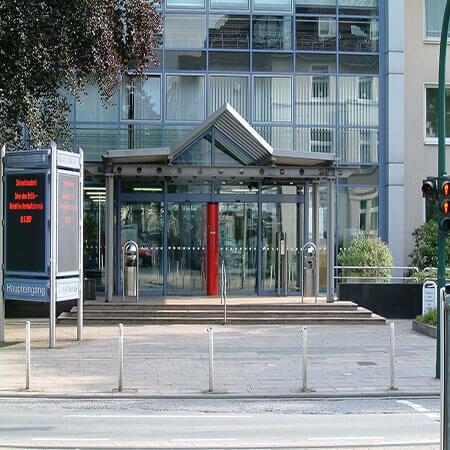
Department of Cardiothoracic Surgery
According to the Focus magazine, the Department of Cardiothoracic Surgery ranks among the top German medical facilities specializing in the surgical treatment of diseases of the cardiovascular system and lung cancer! The department offers the full range of surgical services for the treatment of diseases of the cardiovascular system, respiratory tract, including heart and lung transplantation, artificial heart implantation. The therapeutic options include aortic surgery, coronary artery bypass grafting, transplantation surgery, surgical treatment of heart rhythm disorders (arrhythmias), minimally invasive surgery, surgical treatment of the heart valves, including reconstructive interventions. All operations are performed using state-of-the-art technology and in accordance with the current recommendations of professional societies.
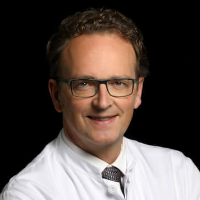




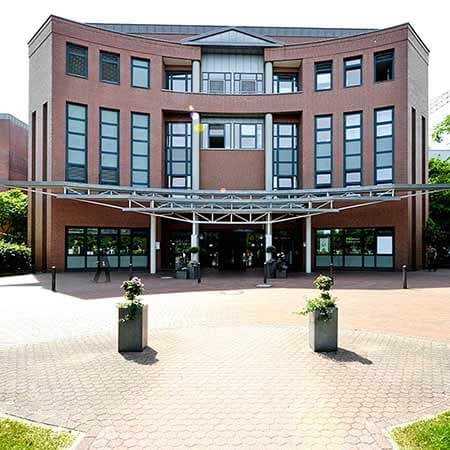
Department of Cardiac Surgery
The Department of Cardiac Surgery provides a full range of surgical treatment in its area of specialization. Special emphasis is placed on heart valve repair and replacement surgery, coronary artery bypass grafting, thoracic aortic surgery, adult congenital and acquired heart disease surgery, pacemaker and defibrillator implantation, and artificial heart implantation for severe heart failure. Many heart operations are performed using minimally invasive techniques, which has a positive effect on the healing of the surgical wound. Minimally invasive cardiac procedures also reduce surgical risks and contribute to a rapid recovery of the patient in the postoperative period. Surgical treatment of cardiac pathologies is performed in advanced operating rooms equipped with the latest technology. The cardiac surgeons of the department successfully perform routine and complex surgical procedures, saving the lives of thousands of patients. The specialists work in accordance with current clinical protocols and follow the recommendations of the German Society for Thoracic and Cardiovascular Surgery (DGTHG).
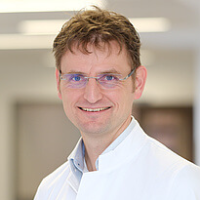

Department of Cardiothoracic Surgery and Vascular Surgery
The Department of Cardiothoracic Surgery and Vascular Surgery provides effective surgical treatment for diseases of the heart, respiratory system, and blood vessels. The team of cardiac surgeons operates on patients with heart valve pathologies, coronary heart disease, heart failure, and heart rhythm disturbances. In the field of thoracic surgery, the key focus is on the surgical removal of lung tumors and lung metastases. The specialists in this area also perform surgery to repair chest wall deformities. In the field of vascular surgery, interventions for abdominal and thoracic aortic aneurysms are most often performed here. The department's vascular surgeons are also exceptionally competent in the treatment of peripheral occlusive arterial disease. A great advantage for the department's patients is that almost all surgical interventions are performed using minimally invasive techniques, so there is no need for a long postoperative recovery. The department's operating rooms are equipped with state-of-the-art technology. This allows for effective and safe treatment. The priority is always personalized medical care for patients.
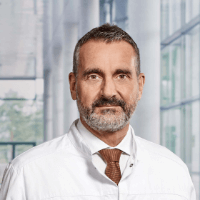





The human heart has four valves, through each of which blood flows in a specific direction. The valves allow blood to flow in the right direction and prevent it from flowing back.
Content
- Overview
- Causes and risk factors
- Symptoms
- Diagnostics
- Treatment
- Prognosis
- Where can I undergo aortic valve repair treatment in Germany?
- The cost of treatment in Germany with aortic valve repair
- How can I undergo aortic valve repair treatment in Germany?
Overview
When a valve cannot close properly or does not open completely due to certain diseases, like for example valve stenosis, heart valve disease is diagnosed. Depending on the severity of diseases and on their cause, heart failure may develop gradually or rapidly, with corresponding medical manifestations.
Aortic valve insufficiency refers to a heart defect in which damage of the aortic valve prevents the aortic valve from closing completely. This causes a circulatory disorder.
During the ventricular systole, blood goes from the left ventricle and enters other vessels along the aorta. In the absence of pathological diseases in this area, the aortic valve flaps are connected fully, and this excludes the return of blood back. The blood moves along the aorta, making its full cycle. But if such pathology as aortic valve insufficiency develops, normal blood flow is disturbed, the aortic valve does not completely close the aortic opening and some of the blood returns to the left ventricle. The left ventricle also receives blood from the left atrium at the same time. As a result, the larger volume of blood accumulates in the left ventricle. The left ventricle needs to cope with a large volume of blood, making great efforts to maintain blood coronary flow. Over time, as a result of this increased load, the heart muscle becomes hypertrophied. Besides, against the background of aortic valve insufficiency, the heart itself does not receive sufficient nutrition due to impaired coronary blood flow. This further aggravates the quality of the heart work.
Insufficiency of the aortic valve can be an isolated defect, or it can occur in different combinations with other heart diseases.
Causes and risk factors
The following health conditions can be the causes of aortic valve insufficiency:
- Rheumatism or inflammation of the connective tissues of the mitral and aortic valves
- Degenerative changes in the valves of the heart (calcification, Marfan syndrome)
- Infectious diseases of the heart muscle: endocarditis, myocarditis
- Complications of heart diseases (post-infarction conditions, excessive expansion of the valves as a result of pulmonary hypertension)
Symptoms
Given the great compensatory capabilities of the myocardium, the disease may be asymptomatic for a long time. Even during a physical exertion, a person may not experience symptoms immediately.
Without proper treatment, the progression of violations of coronary and cerebral disorders leads to the development of the first symptoms in the form of dizziness, weakness, fatigue, and high heart rate. Aortic valve insufficiency is manifested by tachycardia, felt at rest, and symptoms worsen after physical exertion. Pallor is noted. Shortness of breath develops, as well as angina attacks.
A person with aortic valve insufficiency can have external medical manifestations of the pathology. The patient can see the pulsation of the cervical vessels and the head might be shaking along with the pulse.
When measuring blood pressure, and increased systolic pressure is detected, but diastolic pressure is always decreased. With such diseases, blood pressure always changes and the condition is poorly controlled by the medications intake.
During the heart auscultation, there is a weakening of the first tone at the apex, and a weakening of the second tone over the aorta (up to complete disappearance in the severe destruction of the valve leaflets). A soft blowing diastolic heart murmur appears in the third intercostal space on the left and above the aorta. It's auscultated more clearly when the patient exhales completely and holds his breath.
Changes in blood flow occurring against the background of the medical condition cause enlargement of the left ventricle and may eventually lead to mitral valve insufficiency. This will manifest itself with a systolic heart murmur. Flint's diastolic heart murmur appears less often. Sometimes, with this medical condition noises can be heard when auscultating the femoral artery.
A severe complication of the aortic valve insufficiency is pulmonary edema, as a manifestation of heart failure and heart rhythm disturbance – ventricular extrasystole.
Diagnostics
First of all, the doctor may think about the presence of aortic valve insufficiency based on the results of the medical examination of the patient. The manifestations of this pathology have their own peculiarities, which are revealed externally and during the auscultation. As mentioned above, typical symptoms appear at a certain stage of the disease development.
The medical diagnosis is confirmed after carrying out diagnostic procedures.
Echocardiography can detect signs of this defect in the form of backflow of blood, increased work of the muscle wall of the left ventricle during systole, and tremor of the mitral valve when blood fills the left ventricle.
A phonocardiogram reveals changes in tones and noises that identify aortic valve insufficiency.
ECG and X-ray examination of the heart may not detect changes for a long time. They are found at the later stages, when left ventricular hypertrophy develops.
Treatment
The aortic valve insufficiency is usually a mechanical problem that does not respond well enough to medicines. The only exceptions when medicines can be effective are cases of acute infectious diseases of the heart valves, for example, infective endocarditis, in which the further development of valvular insufficiency can be stopped only with the help of a large dose of medicines.
With medicines, the feeling of discomfort caused by a defect in the heart valve can be eliminated. For example, medicines are used in shortness of breath. ACE inhibitors, AT-antagonists and beta-blockers are used in weakening of the pumping function of the heart muscle and an increase of the atria volume. Such medicines as beta-blockers or drugs from the glycoside group are prescribed to slow down the heart rate in atrial fibrillation. Medicines with a vitamin K-antagonist are additionally used to prevent thromboembolism.
Surgical treatments of valve insufficiency involve either valve repair or valve replacement.
Mitral valve replacement, for example, is a very common surgery. A new non-surgical method of treatment, i.e. the percutaneous mitral valve repair using the MitraClip system, is currently recognized and approved for medical use as an effective method of treating diseases of the mitral valve. It is used successfully in the treatments of mitral valve insufficiency. The MitraClip method is an important therapeutic option for selected high-risk patients with congestive heart failure.
Aortic valve replacement surgery, on the other hand, uses either an artificial valve or a prosthesis made of biological material. A valve created in a high-tech laboratory is used to replace the aortic valve. Installation of such a prosthesis is an extremely responsible task. It can only be performed by an experienced surgeon. The surgery requires serious preparation, and the recovery period also requires effort of the patient and healthcare professionals.
Aortic valve replacement can be performed in two ways:
- Open heart surgery
- Minimally invasive method
Modern cardiac surgery actively uses methods that allow carrying out the aortic valve replacement surgery without incision of the chest. Surgery without an incision will be more expensive than open surgery. However, this approach reduces the risks and facilitates the recovery period.
An alternative to open-heart surgery to replace the aortic valve is the transcatheter aortic valve replacement. With a catheter, the prosthetic heart valve is passed through the vascular system, usually through the femoral artery, or transapically – directly into the heart cavity, up to the aortic valve, where it is positioned. Access can be created through an artery in the shoulder or leg, using a catheter. Local or general anesthesia is required. The total time for the endovascular aortic valve replacement surgery is about one to one and a half hours.
The cost of treatment with open aortic valve replacement surgery is lower than with minimally invasive surgery. During valve replacement with open surgery, the patient is connected to an artificial circulatory system, a heart-lung machine. The risk for the patient is slightly higher than with the alternative method, but there is no risk of deformation of the conducting vessels.
Three types of the artificial valve used in aortic valve replacement are usually available at the department of cardiology.
- Biological valve.
Sometimes it is possible to reconstruct a new valve from the patient's own tissues. Such a valve will serve for about 10-15 years, after which the aortic valve replacement surgery will need to be repeated. This is due to the gradual degradation of the reconstructed valve, its inevitable degenerative changes. With this approach, medicine needs to be taken only for the first six months after surgery.
- Mechanical valve.
Such a valve is manufactured in a laboratory and requires the constant intake of medicine (for the patient's entire life). Such prostheses are installed mainly in young patients.
- Donor valve.
This option is used only in separate cases since there is a risk of rejection of donor tissues by the patient's body. The outcome of aortic valve replacement with such an artificial valve is difficult to predict; the possibility of complications cannot be assessed in advance. For the valve to remain viable, doctors need to carry out therapy that suppresses the recipient's immunity. As with the installation of an artificial valve, the patient needs a lifelong intake of medicines to exclude the possibility of thrombus formation.
The recovery period is also the important stage, which has its own peculiarities. During the first days after aortic valve replacement, physical activity and psycho-emotional overload are prohibited. Follow-up should last for at least three years after the surgery. Professional athletes can only return to training in few years. Taking medicine prescribed by a doctor is a prerequisite. It is also very important to check regularly the state of the body, and monitor possible concomitant diseases. The artificial valve itself is not going to affect the patient's health in the future.
Prognosis
The medical prognosis for aortic valve insufficiency depends, first of all, on the degree of damage to the heart muscle. A neglected disease can lead to myocardial weakness, heart failure and, ultimately, death.
Where can I undergo aortic valve repair treatment in Germany?
Medical tourism is becoming more and more popular these days, as a treatment in Germany often ensures a much better quality of aortic valve repair.
The following hospitals show the best success rates in aortic valve repair in Germany:
- University Hospital Essen
- University Hospital Oldenburg
- University Hospital Frankfurt am Main
- University Hospital Tuebingen
- University Hospital RWTH Aachen
You can find more information about the hospitals on the Booking Health website.
The cost of treatment in Germany with aortic valve repair
The prices in European hospitals listed on the Booking Health website are relatively low. With Booking Health, you can undergo treatment in Germany with aortic valve repair at an affordable price.
The cost of treatment in Germany varies, as the prices depend on the hospital, the specifics of the disease, and the complexity of its treatment.
The average cost of treatment with aortic valve repair in Germany is 20,442 EUR – 35,459 EUR.
You might want to consider the prices of additional medical procedures and follow-up care, e.g. rehabilitation after aortic valve replacement in Germany. Therefore, the ultimate cost of treatment with aortic valve repair may differ from the initial price.
To find out information about the overall cost of treatment in Germany, contact us by leaving the request on the Booking Health website.
How can I undergo aortic valve repair treatment in Germany?
It is not easy to self-organize any treatment abroad. It requires certain knowledge and expertise. Thus, it is safer, easier, and less stressful to use the services of a medical tourism agency.
As the largest and most transparent medical tourism agency in the world, Booking Health has up-to-date information about aortic valve repair in the best European hospitals. We will help you select the right medical center taking into account your wishes for treatment.
We want to help you and take on all the troubles. You can be free of unnecessary stress, while Booking Health takes care of all organizational issues regarding the treatment with aortic valve repair. We provide our services so that you can undergo aortic valve repair safely and successfully.
Medical tourism can be easy! All you need to do is to leave a request on the Booking Health website, and our manager will contact you shortly.
Authors:
The article was edited by medical experts, board-certified doctors Dr. Nadezhda Ivanisova and Dr. Vadim Zhiliuk. For the treatment of the conditions referred to in the article, you must consult a doctor; the information in the article is not intended for self-medication!
Sources:

